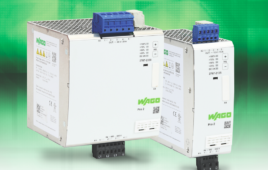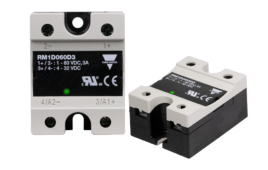When designing switches you should be aware of how arc, weld, and bounce can affect your product and how it performs.

Switches designed for industrial,transportation, indoor/outdoor public access, and lifting/moving environments can be challenging because switches are exposed to oil, solvents, chemicals, water, and dust.
Electromechanical devices, including switches, keypads, keyboards, pointing devices and other elements such as indicators and alarms, are critical aspects of the human-machine interface (HMI) for controlling equipment and systems. HMI component technology has undergone major changes over the years to serve the increasingly specialized needs of industrial, transportation, telecommunications, audio/visual, public access/security, and lifting/moving applications.
Switches are important components of HMI technology. While it’s relatively easy to select the right switch for your application, it’s not as easy to design them. There are a few factors that can thwart your design intent.

Because of the flexibility of modular switch designs, customization is easily achieved through the specification of lens colors, materials, and shapes; illumination types and colors; bezel materials and finishes; actuator functions; switching element specifications, and the use of multiple switching elements for a range of switching configuration.
Arching can occur when contacts make or break. Welding occurs when contact material melts and fuses, causing contacts to stick. Arcing and welding degrade or burn contacts, reducing useful life and are more severe in DC than AC applications. Solid-gold contacts are more easily melted and eroded by arcing, and so should be limited to low-current switching where there is little or no arcing. As switched current increases, hotter arcs form and the potential for erosion and contact welding is greater.
Arcing is also more severe when handling high in-rush currents, for example, inductive and capacitive loads that require high initial current. Lamps may draw 10 to 12 times their normal operating current when first activated. Relays, solenoids, and motors, on the other hand, may show high inductive in-rush currents when powering up. Switches for these higher current applications should use gold-plated silver or all silver contacts that resist the effects of arcing. Minor periodic arcing with silver contacts can be beneficial because it keeps contacts free from dirt and corrosion.
Contact “bounce” or “chatter,” where a contact rebounds for several milliseconds before it closes, may not be a concern for power circuits but can cause problems in logic circuits which could interpret the on-off bounces as data streams.
Mechanical factors
You can minimize bounce by reducing the kinetic energy of the contact by incorporating buffer springs, air, or oil shock absorbers to dampen contact recoil, or employing wiping or sliding type contacts. Bifurcated, fork-shaped contacts minimize contact bounce while providing redundancy and higher reliability. Commercial switches generally limit contact bounce duration from <1 ms to <=100 ms.
The force holding movable and stationary contacts together is critical, ranging from 5 gm in miniature switches to more than 150 gm in heavy-duty, motor-load switches. Snap-action switching elements reduce arcing by rapidly moving contacts from one spring-loaded position to another independent of actuator speed. Self-cleaning contacts slide against each other when making or breaking a circuit, removing contamination to keep contact resistance low. Conversely, slow make/break switching elements, usually used in emergency-stop switches and in high-power applications, employ rigid contact arms that force necessary contact separation to overcome contact welding.
Which switch specs are best for you?
Switches come in a variety of shapes, sizes, ratings, and functions. Generally, they are built for long life to minimize the need for replacement. High-quality switches should have a mechanical life of 1 million to 10 million operations.
Many switches today are modular, comprised of quickly assembled components including actuators, switching elements, illumination blocks, lenses, marking plates, and mounting systems. Industrial water and oil tight switches are designed for front and back-of-panel environmental protection against dust, dirt, water, solvents, and other foreign materials and certified to meet various levels of ingress protection as specified by the National Electrical Manufacturers Association (NEMA) and the international Internet Protocol (IP) Code.

Touch-sensitive switches are electronic and use capacitive, high frequency, or Piezo technology rather than mechanical actuators to sense when they have been touched and initiate a response such as turning on lights or opening passenger doors on mass transit vehicles.
You can simplify your search for the perfect switch by analyzing your application requirements and determining electrical ratings, actuation preferences, physical configuration and mounting needs, and any special requirements such as illumination, marking, or environmental sealing.
Electronic switches are rated for current, voltage, voltage type (AC, DC), and load type (inductive, resistive). They are categorized into three power levels:
1. Signal level: typically up to 42 V, and 100 mA
2. General purpose: typically 42 – 250 V, and up to 5A
3. Power: typically >250 V and/or >5A.
Level 1 is for low-power, logic-level applications while Levels 2-3 are for resistive and inductive power requirements. Continuous current capabilities range up to 100 mA to 10 A or more over the three levels. Switches are supplied with appropriate contacts for their current-carrying capa-bilities. Contacts in modular switches are housed in a switching element that includes connection terminals and an attachment port for the actuator.
The switching element also has contact terminals for connecting system electrical wiring. Several different terminal methods are used and many are offered as options when specifying a given switch. The most popular connectors include:
• Screw terminals
• Soldering terminals
• Quick-connect (QC) plug-in terminals (standard sizes: 2.85 x 0.5 mm [0.112 x 0.020 in.] 4.8 x 0.8 mm [0.189 x 0.031 in.], 6.3 x 0.8 mm [0.248 x 0.031 in.]); also available with two terminals per contact
• Soldering-/QC plug-in terminals (standard sizes: 2.0 x 0.5 mm [0.079 x 0.019 in.], 2.8 x 0.5 mm [0.110 x 0.019 in.], 2.8 x 0.8 mm [0.098 x 0.031 in.]);also available with two terminals/contact.
• Push-in terminals
• PCB terminals (solder, wire wrap, straight, right angle, vertical, surface mount device (SMD).
• Ribbon cables
Production considerations may guide choices – using tool-less, snap-in panel mounting or wave soldering for PCB mounting, for example.
Actuation preferences
The actuator assembly, including the front lens touch surface, is the part of a switch that directly interacts with a user. Its form is closely related to its function. The following is a sampling of electromechanical actuator types:
• Pushbuttons
• Emergency-stop pushbuttons (twist
or key unlock)
• Keylocks (multiple position)
• Lever/selectors (multiple position)
• Joysticks
• Toggles
• Rockers
• Slides
• DIP (dual inline packaging)
• Membrane (metal dome and
conductive rubber)
Pushbuttons, keylocks, and lever/selector switch actuators provide one or a combination of switching actions. With a momentary-action switch, an activation force (push a pushbutton or twist a keylock) moves contacts to a new position. When the activation force is removed, the actuator and contacts return to the original position. With a maintained or alternate action switch, contacts move to a new position and remain there until the switch is activated a second time, which returns actuator and contacts to the original position. For safety applications, E-Stops are a type of maintained-action switch that requires a pull, twist, or key to reset to the original position.
Actuators are designed to require a certain level of force to affect a switching action and that force varies considerably depending on switch type and the number of contacts. For example, a small, precision snap-acting pushbutton rated at 100 mA, 42 Vac/dc, needs only 140 g (1.4 N) of force to activate while a larger snap-action pushbutton rated at 230 Vac, 6A/24 Vdc, 10 A requires 2,000 g (20 N), and a slow-make E-Stop pushbutton rated at 250 Vac, 5 A requires 5,000 g (50 N).
Discuss this on the Engineering Exchange:
EAO Switch Corporation
eao.com
::Design World::
Filed Under: ELECTRONICS • ELECTRICAL, Switches





Tell Us What You Think!